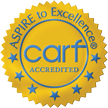What Is Heroin Addiction?
Hydrocodone, the US’s most prescribed painkiller, was sold to 83.6 million people in 2017. This ubiquitous medication has a high rate of abuse – in the same year, 6.9 million Americans were reported to have misused it. If you or a loved one is using this potent opioid, understanding this drug as well as what abuse, addiction, and treatment options look like is crucial to preventing harm.

What Is Hydrocodone

Hydrocodone is the generic name of a prescription painkiller in the opioid family. It is typically prescribed by doctors for patients who are experiencing moderate to severe short-term pain (eg: during recovery from a major injury or following surgeries or invasive dental procedures).
The sedative and analgesic (painkilling) effects of hydrocodone are similar in intensity to the natural opiate morphine, and its addiction potential lies about on par.
It only takes five days of prescribed use for an individual’s risk of developing hydrocodone dependence to greatly increase.
How Is Hydrocodone Addiction Treated?
Opiates like hydrocodone induce powerful withdrawals that can deter sobriety and cause relapse, as well as being potentially dangerous in their own right – because of this, medically-assisted treatment (MAT) is the gold standard for hydrocodone detox.
MAT for hydrocodone addiction often involves a gentle process of easing the addicted individual off of the narcotic substance in a safe, monitored manner. Medications such as methadone and buprenorphine are used to alleviate the worst of withdrawal symptoms but slowly eased back as part of a tapering regimen.
This is accompanied by psychiatric support and holistic therapies aimed at addressing the root causes of addiction – care that continues after the MAT schedule has concluded and provides the backbone of long-term, whole-body recovery from addiction.
Find Help for Hydrocodone Addiction
Realizing that a medication that was intended to help you heal has taken control of your life is shocking and alienating – but don’t let it stand in the way of a better life. If you or someone you love is living with hydrocodone addiction, it’s ok to reach out for help.
At our licensed addiction clinic we offer the above treatment and more – MAT and psychiatric support, holistic and continuing care as well as family engagement and dual diagnosis for co-occurrent disorders. Contact us today for more information about what our team can offer, to schedule an assessment, or to learn about intervention options.
Legal status and definitions
In the wake of many years of rising hydrocodone overdoses, the Drug Enforcement Administration (DEA) reclassified hydrocodone combination products as Schedule II controlled substances in 2014. This means that these drugs are considered to have high potential for abuse, and restrictions exist for accessing refills. Beyond that, many states have passed laws limiting the days an “opioid naive” patient can have hydrocodone supplied. 15 states limit it to seven days, while three more limit it to five. The strictest limits on initial prescriptions exist in Tennessee, Kentucky, Florida, and Minnesota - where you cannot be supplied more than 3 to 4 days of this substance at first. The FDA has only approved one hydrocodone-only medication: Zohydro. This comes in formulations of 10-50mg. It is typically only used in cases of severe pain and existing opioid tolerance.
Brand Names
Most formulations of this substance on the market administer it in combination with another medication – typically acetaminophen, but sometimes ibuprofen or homatropine. Common brand names include:
- Vicodin
- Norco
- Lortab
- Lorcet
- Hycodan
- Co-gesic
- Liquicet
- Dolacet
- Anexsia
- Zydone
- Vicoprofen
- Xodol
Street Names
Individuals who are using hydrocodone illicitly or without a prescription often opt to call it by a street name. These nicknames for hydrocodone are sometimes generic, such as tabs or hydros, but some reference the brand or manufacturer name:
- Narco or Norco
- Vickies
- Vike
- Vics
- Lorris
Characteristics of Hydrocodone Medicaments
Identifying hydrocodone combination medication is not always easy, as most pills are white, oblong, and may or may not have imprinted dosage information on the surface. That said, prescriptions can also come in blue, orange, pink, or yellow (Zydone tends to color code its tablets according to dosage) and oval or circle shapes. Hydrocodone is also available in cough syrup form in combination with homatropine.
Side effects
Even used as prescribed, hydrocodone can result in acute side effects, although the higher the doses taken, the higher the chance of encountering dangerous effects.
Mild to moderate side effects:
- Dryness in eyes, nose, and mouth
- Flushed skin
- Nausea
- Pinpoint or dilated pupils
- Drowsiness
- Loss of coordination
Severe side effects and overdose signs:
- Vomiting or diarrhea
- Shallow, slow breathing
- Hypothermia
- Respiratory failure
- Loss of consciousness
- Seizure
- Coma
- Death
Dangers of Hydrocodone Misuse
Hydrocodone misuse describes behaviors related to the nonmedical use of hydrocodone. This can mean taking hydrocodone without a prescription, but it can also refer to any of the many ways individuals take their supply outside of doctor’s orders. Long-term misuse of hydrocodone increases the likelihood of overdose, but also disrupts the body’s functioning in ways that can result in persistent side effects, such as:
- Organ tissue damage
- Cardiac damage
- Mood changes and hallucinations
- Hormonal and reproductive issues
- Liver disease
- Liver failure
- Severely heightened risk of dependence and addiction

Do You Need Help?
We can help you get better. Together, we can build up your confidence and you can regain control over your life!
Contact us now to ask about our addiction treatment and our hydrocodone rehab program now!
Defining Hydrocodone Addiction
Hydrocodone addiction has established itself once an individual begins to experience a compulsive need to take this substance despite having learned of or suffered the negative consequences of doing so. Typically, hydrocodone addiction coincides with physical dependence and tolerance – meaning it requires more of the substance to experience the same lived effects.
Addiction has many telltale signs that make it possible to recognize, including:
- Frequent use, as much to chase euphoric highs as to avoid withdrawal symptoms
- Increasing doses, as tolerance continuously increases as long as hydrocodone remains in the system
- Stealing, lying, or engaging in risky behaviors to access hydrocodone
- Losing interest in job, relationships, former hobbies, and social events
Difference Between Abuse and Addiction
Hydrocodone misuse usually begins with a prescription from a physician, which means that we sometimes gloss over the signs and dangers as we witness them. Once an individual has begun to take a substance in ways not included in their prescription, they are at great risk of addiction:
- Taking higher doses or taking doses more frequently
- Taking pills in ways not outlined by the prescription (eg: crushing slow-release tablets)
- Taking them beyond the prescribed time frame
Misuse on its own does not necessarily connote addiction, but it can be the gateway to it. Any of the above behaviors are definitions of abuse.
Symptoms of Hydrocodone Addiction and Dependence
These may include:
- Cravings for hydrocodone
- Withdrawal symptoms as the drug wears off
- Compulsive thoughts about accessing and using hydrocodone
- Failed attempts to quit using hydrocodone
- Social isolation from friends and loved ones
- Secrecy about hydrocodone use
How It Affects Us?
As a friend or family member of a person who is showing signs of hydrocodone addiction, it is normal to experience a range of emotions about your loved one’s behavior. It is painful to watch a person that we care about become altered by substance abuse, so we need to remember that the agency of loved ones is limited but can be specifically directed – and that coping and supporting go hand-in-hand.
Family Matters
Addiction is often described as a “family disease.” In practice, this means that sometimes addiction runs in families, and can be perpetuated by unhealthy relational dynamics. On the other hand, it means that authentic family engagement with the treatment and recovery process can be extremely meaningful to outcomes.
Codependency
Codependency – a behavioral pattern wherein one person engages with behaviors that are harmful or self-destructive, while the other looks after them by enabling their behavior – is common in relationships affected by addiction. Enabling feels caring, but it puts both people at greater risk for addiction issues.
Helping Your Loved Ones
Research has proven that families and other close communities can be predictors of success in their loved one’s journey to stop using for good by:
- Educating themselves on addiction,
- Staying compassionate to, supportive of, and engaged with their relative’s recovery
- Helping out with logistics and admin
- Setting boundaries
- Respecting their loved one’s recovery needs
- Accessing therapeutic support
Is Intervention Necessary?
Many people who live with opioid use disorders are not aware of it themselves – this family of substances can produce powerful delusions and fog our minds, we are far more focused on continuing to use than dissecting the consequences of our use. An organized, expert-led intervention can be a valuable tool in expressing concern and setting boundaries related to treatment once you’ve seen the signs of addiction in a loved one.
Hydrocodone Overdose and How to Help
If someone near to you is showing symptoms of overdose on hydrocodone, take action fast:
- Assess whether or not you can quickly discover useful information for emergency services (including age, weight, product name/dose, time consumed, and whether the prescription is theirs)
- Call 9-11
- First response care: support breathing, try to draw them to consciousness, administer naloxone if available
Administering Naloxone and Local Legislations
Naloxone is a prescription medication, but deliberate workarounds, including standing orders, third-party prescriptions, and other policy changes, have been introduced in most states as a part of the nationwide effort to reduce opioid overdose fatality. The SAFE project offers a useful referenceable guide to state-by-state legislation on naloxone dispensation.








